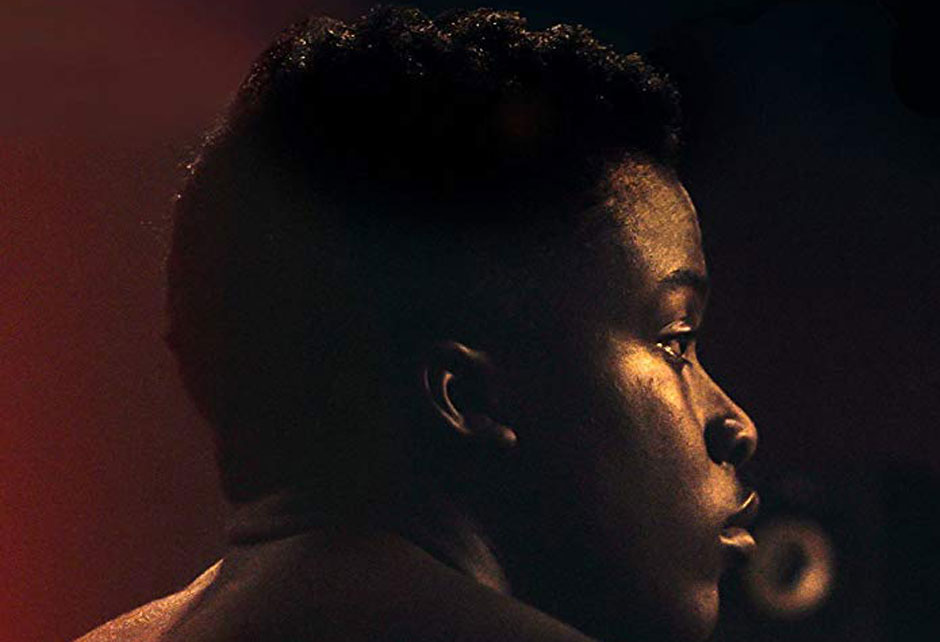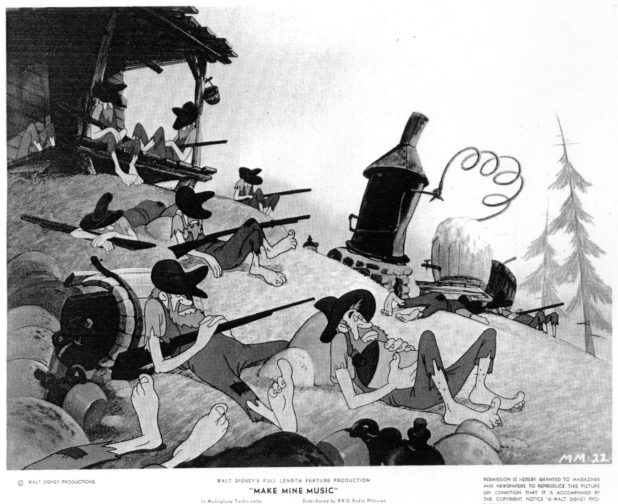
Two new films are currently on the horizon that are well worth seeing. Each of them treats the scourge of deep, systemic poverty in America to which our political leadership seemingly has no answers.
hillbilly, still making the rounds of the film festivals, is a fresh and revelatory documentary about Appalachia that combines a historical look at the “othering” and marginalizing of the region with a current look at some of the activists who are beginning to counter stereotypes of lazy, feckless moonshiners. The consciously used lower-case letter “h” in the title emphasizes the lack of pretense in the region, and in the film.
The second film, the feature Life and Nothing More, opens in theaters soon (New York on Oct. 24, Los Angeles on Oct. 26). Reminiscent of the runaway hit film The Florida Project, Life also takes place in that state—in Tallahassee—and with admirable subtlety surveys the ways in which poor people, especially African Americans, are made vulnerable by a socio-economic structure that simply doesn’t work for them.
Both films show how in the face of despair and frustration, a mode of often reckless rebelliousness often stands in for authentic resistance, as avenues for change and hope are systematically thwarted. Interestingly enough, these two recent films are located in time during the Trump-Clinton presidential race and in the immediate aftermath. They serve as a much needed wake-up call to bring out how for so many people on the lowest rungs of society, that race simply did not present enough of a visible alternative to motivate people to care much about the outcome. At a certain level, expectations were overturned, yet amongst the dregs of society, life goes on as before.
Appalachia
Appalachia is a case study in the complexity of media representation. Since early on in our country’s history, the rural character of this region has inspired urban elites to regard the area as the home of ignorant, ill-spoken, inebriated buffoons. Nothing in the film underscores this scorn so much as the famous gaffe on Hillary Clinton’s part when she referred to the core of Donald Trump’s supporters as the “deplorables.” As if poverty, joblessness, lack of opportunity and the phasing out of coal mining were not burden enough to bear, now certain regions and demographics were being blamed for all of America’s social ills. No wonder folks struck back, even if in an angry, unfocused, not strategically thought-out, buckshot fashion.
If nothing more—and it is substantially more—hillbilly should provide a healthy dose of humility to the elites of both right and left, who have isolated themselves in their own citified bubbles of prejudice and misunderstanding. They—perhaps I should say “we” because the film made me personally aware of my own conceptual limitations—have come to believe in the caricature of a region and a people that was framed over centuries by those who, to further their own interest, depended on diminishing the humanity of the “other.” Many of the same stereotypes about Appalachian people—who are almost always identified as white—are also common in dehumanizing African Americans, Latinx, immigrants, and other groups. Yet hillbilly poverty is so famously cute, and sometimes dangerously ornery, by contrast to much other rural poverty. In the elite gaze, the “othering” mentality says, “They’re violent, not me.”

Filmed in Georgia, Kentucky, Ohio, Tennessee, Virginia, and West Virginia, hillbilly introduces us to a set of artists, poets, activists, queer (“Fabulachian”) musicians, “Affrilachian” poets, academics and intersectional feminists who are all but unknown outside the region.
“I’m happy to see somebody trying to cover us as we really are and not what some people think we are,” says Dolly Parton about the film. She’s one hillbilly who has made it in America. “It’s wonderful the attention you’ve paid to so many areas that are so important to all of us. I’m proud to have been mentioned in the film a time or two.” In fact, hillbilly includes a clip from the well-known film Nine to Five in which, in her unimproved country accent, she chews out her boss for his snarky comments in a scene that brilliantly anticipates the #MeToo movement.
Filmmakers Ashley York and Sally Rubin are both Appalachian-American filmmakers with a strong feminist and working-class vision. In hillbilly they have sharpened their sensitivity to both insider and outsider gazes on Appalachia to tell a tragic, comedic, and poignant story. Among the guest interviewees they recruited to appear in the film is Michael Apted, director of 1980’s Coal Miner’s Daughter. Apted was on hand to introduce the preview screening in Los Angeles and moderate the Q&A following.
Other informants include actor Ronny Cox (Deliverance, Bound for Glory), feminist writer bell hooks, regional writer Silas House from Kentucky, Billy Redden (Deliverance), local Black poets Crystal Good and Frank X. Walker, interdisciplinary sociologist Barbara Ellen Smith, professors Tony Hawkins, Anna Creadick, Jerry Williamson, Meredith McCarroll and Kirk Hazen, author Chad Berry, and several others.
hillbilly started off in the filmmakers’ imagination as a more or less academic discussion of Appalachian identity. Originally their working premise was “Appalachia has no voice.” But the filming took place over a period of three years, 2014 to 2017. As Ashley York, now a progressive professional filmmaker based in Los Angeles, returned to her roots in Meathouse Holler, Ky., she reunited with many of her intimate family members, discovering that quite a few of them were disgusted with the politicians’ “empty promises.” For years, says her grandma, “The only support we had was our own backbone.”
They had become avid Trump supporters. If you listen to them, they’ll tell you that the people Trump lifts up are the same people the left puts down. As president and forever rabble-rouser on the campaign trail, Trump has honed this message, however faux, into a sharp weapon for right-wing power.
Filming on election night focused both on the elation of her grandma and other relations, and on the head-scratching mystery felt by others, who asked themselves, “How could this have happened?” Even some of those who left the hollers and moved to larger, more liberal places, like Berea, home of the famous liberal arts college, woke up that Wednesday in November realizing that they did not truly know their own region and its people as well as they thought. As novelist Silas House puts it—he is filmed with his husband whom he married in Kentucky shortly after the Supreme Court same-gender marriage decision of 2013—“I spent my whole career defending rural people. I can’t do that anymore.” And truth be told, aren’t there swaths of “Appalachia” spread all over the country?
In the last months of filming and especially in the editing process, when the production team had to figure out what kind of film they were making, York herself, unexpectedly and against her initial intention, became a character in her own documentary.
In a part of the country where coal and Walmart are the principal occupations, young people have known for years that success in life meant moving away and losing your accent: That was the case with Ashley York. But a new generation of forward-thinking people are proud of their regional roots and have committed to stay. They intend to focus on what Appalachia is and has the potential to become, not what it lacks and isn’t.
Ironically, in a process that involved intense alternating periods of filming and fundraising, it was the 2016 election that helped with the final push for funds as the criticality of understanding the vote came into focus.
Life in Tallahassee
In Life and Nothing More, the second feature from Spanish-born filmmaker Antonio Méndez Esparza, now resident in Tallahassee, we discover the rich emotional everyday life of a poor, struggling African-American family in that capital city of the state (whose African-American Mayor Andrew Gillum is currently the Democratic candidate for governor). Regina (Regina Williams), a single mom ever since her husband was incarcerated for a long sentence, is doing her best to feed and house her family of two kids, Andrew (Andrew Bleechington), 14, and Ry’nesia (Ry’nesia Chambers), 3, in a run-down apartment in a depressed neighborhood. Everything about their circumstances spells poverty and marginalization.
Andrew is in high school and plays football. He has a tendency to get himself into trouble with the law, surrounded as he is with other kids from presumably similar homes. Regina is a caring mom, but prone to vulgar language in the house and anger over her going-nowhere diner job. Both mother and son are in the process of finding their identities in American society. Andrew does have a tenuous connection with his dad in prison, in the form of occasional loving, well written letters full of advice and concern. He also has other men in his life, counselors, friends, probation officers, who try to guide him on a constructive path.
A correctional officer, conducting a class for troubled youths and trying to direct them away from a life of crime, poses the stark question: “At the end of the day, are you free, dead, or in jail?” But is the question really so simple? If you’re “free” in the society these kids are growing up in, just how are they going to feel it, know it? For most of us, even with some education and opportunities, our “freedom” is still highly conditional. A high school civics teacher is heard engaging her students about “laws that need to be changed,” which is about as explicit as the director gets in suggesting that in the present set-up, those students are basically set up to fail.
The director includes a scene of three women on their smoke break—Regina, another Black worker from the Red Onion Grill and a third white woman from the nearby Jimmie’s Auto Truck Plaza—weighing in on the Trump-Clinton race in progress. It seems doubtful that any of them will be voting that November: They just don’t see much difference between the candidates, nor how a win by either one is going to impact them. As in Appalachia, it’s not so much a question of right vs. left, but elite vs. the downtrodden. And once again, on cue, the pundits will blame the nonvoters (and the “dumb voters,” of course) for the state of the nation. No one is asking students—or voters—What do you want?
It’s hard for people untrained in critical thinking to even answer that question for themselves. Here’s where I have some trouble with the title of this film. One of the plot elements in the film is an unexpected pregnancy and the question of keeping the baby or choosing abortion. The title would seem to lend support to the “choose life” anti-abortion side, as though “life” itself were the only value worthy of ultimate consideration “and nothing more.” Given that America these days seems to be going the way of literally guaranteeing “nothing more” once a child is born, I am leery of a cultural product which retreats from an honest, self-confident consideration of abortion where it may be called for. I don’t place myself as judge in the specific case here, but I do feel tension insofar as the film is urging viewers to reflect on whether America is offering its poor (up to a third of the country by some measures) anything beyond “life” as a sentence to be endured. A kid like Andrew may well be asking himself the existential question, Why the hell was I born? As it’s been asked of the anti-choicers, sure, they believe in life after death, but do they believe in life after birth?
A shorthand way of describing this film would be that it’s Andrew’s coming of age story. Aside from the immediate family, including little Ry’nesia, who is as adorable as a little kid can get, there is one other important role, that of Robert (Robert Williams), who is attracted to Regina and starts courting her, with some success. This relationship is important to the story as it helps define Regina apart from both her parental role and her grueling job: She is capable of discovering joy in life.
But another important element of the film is the social milieu, which the director fills out with an exceptionally wide frame of environments—schoolrooms, courts, lawyers’ offices, freeways and streets, probation classes, parks, sports scenes, excursions, workplaces, restaurants, and prison. The family is a microcosm of all this societal superstructure that weighs so heavily on a poor Black family. A lot of folks are pulling hard for Andrew to overcome his challenges, but it’s an uphill battle. It’s no wonder that statistically if you’re born poor in America, you’re gonna stay poor in America.
Kinda just like Appalachia.
In the Q&A following the preview screening, Antonio Méndez Esparza explained his process of using non-professional actors, though he chooses to say “first-time actors.” Unquestionably the three leads in this film will be called upon for future work. The film is partially scripted, but once the actors got into their roles, the director allowed them great freedom to improvise their dialogue. “I didn’t know what the actors could provide,” he said. The end product has a naturalistic verité feel with much use of silences and inner acting. It barely presents itself as fiction.
Life and Nothing More won the 2018 John Cassavetes Award from Film Independent Spirit. I expect it will do very well critically and with audiences. The trailer can be viewed here.












Comments